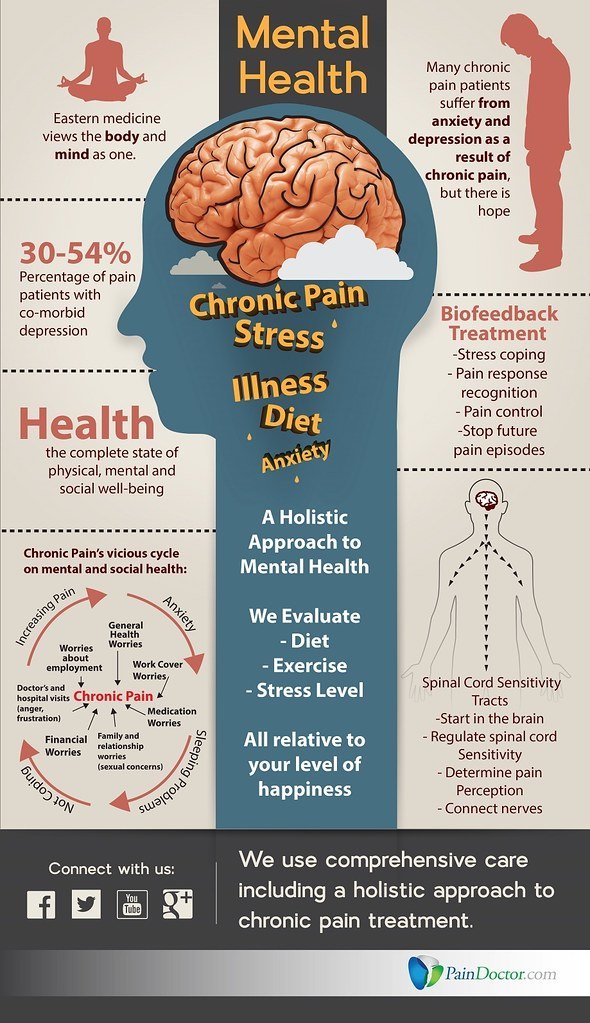In a world where the boundaries between work and personal life have become increasingly blurred, the concept of employee wellness has taken on a whole new meaning. As remote work continues to gain momentum, organizations are faced with the challenge of ensuring the well-being of their employees, even from a distance. While the perks of working from home are undeniable, the absence of a physical office can often lead to feelings of isolation, burnout, and a decline in overall mental and physical health. This is where employee wellness programs step in, offering a lifeline of support and resources to remote workers. In this article, we will explore the importance of these programs in the context of remote work, shedding light on their benefits and how they can contribute to a healthier, happier, and more productive workforce.
Table of Contents
- The Importance of Prioritizing Employee Well-being in Remote Work
- Creating a Holistic Approach to Employee Wellness in a Remote Work Environment
- Addressing the Unique Challenges of Remote Work through Wellness Programs
- Implementing Effective Strategies to Promote Employee Wellness in Remote Work
- Supporting Employee Mental Health and Work-Life Balance in Remote Work
- Q&A
- In Conclusion

The Importance of Prioritizing Employee Well-being in Remote Work
Ensuring the well-being of employees is crucial, especially in the context of remote work. The shift to remote work has brought about numerous benefits, such as increased flexibility and reduced commuting time. However, it has also presented unique challenges that can impact employee well-being if not addressed proactively.
One of the key reasons why prioritizing employee well-being in remote work is essential is the potential for isolation and loneliness. Working from home can lead to a lack of social interaction and a sense of disconnection from colleagues. To combat this, organizations should encourage regular virtual team meetings and provide platforms for employees to connect and engage with one another. Additionally, fostering a supportive and inclusive work culture can help alleviate feelings of isolation and promote a sense of belonging.
Another aspect to consider is the importance of work-life balance. Remote work often blurs the boundaries between personal and professional life, making it challenging for employees to disconnect and recharge. Employers should emphasize the significance of setting boundaries and encourage employees to establish a dedicated workspace. Promoting regular breaks, encouraging physical activity, and providing resources for mental health support are also vital in maintaining a healthy work-life balance.
By prioritizing employee well-being in remote work, organizations can not only enhance productivity and job satisfaction but also foster a positive and supportive work environment. Investing in employee well-being demonstrates a commitment to their holistic development and contributes to their overall happiness and success.

Creating a Holistic Approach to Employee Wellness in a Remote Work Environment
When it comes to employee wellness, a holistic approach is essential, especially in a remote work environment. With the lines between work and personal life becoming increasingly blurred, it’s crucial for organizations to prioritize the well-being of their employees in every aspect of their lives. Here are some key strategies to create a holistic approach to employee wellness:
- Encourage work-life balance: Remote work can easily lead to longer working hours and burnout. Encourage employees to set boundaries and establish a healthy work-life balance. Encourage them to take breaks, disconnect from work after hours, and prioritize self-care.
- Promote physical wellness: Provide resources and support for employees to maintain their physical health. Offer virtual fitness classes, provide ergonomic equipment, and encourage regular exercise breaks. Physical wellness is crucial for overall well-being.
- Foster mental well-being: Remote work can be isolating and stressful. Create a supportive environment where employees feel comfortable discussing their mental health. Offer access to mental health resources, such as counseling services or mindfulness programs.
- Emphasize social connections: Remote work can make it challenging for employees to connect with their colleagues. Encourage virtual team-building activities, regular check-ins, and create opportunities for social interaction. Building strong social connections is vital for employee engagement and well-being.
- Provide learning and development opportunities: Remote work shouldn’t hinder professional growth. Offer virtual training programs, webinars, and workshops to help employees enhance their skills and stay motivated. Investing in their development shows that you value their growth and well-being.
By implementing these strategies, organizations can create a holistic approach to employee wellness in a remote work environment. Prioritizing the well-being of employees not only improves their overall satisfaction and productivity but also fosters a positive work culture.

Addressing the Unique Challenges of Remote Work through Wellness Programs
As the world continues to adapt to the new normal of remote work, it is crucial to address the unique challenges that come with this shift. One effective way to support employees in this transition is through the implementation of wellness programs. These programs not only prioritize the physical and mental well-being of remote workers but also foster a sense of community and connection.
Wellness programs for remote workers can take various forms, catering to the diverse needs and preferences of individuals. Here are some key strategies that can be incorporated:
- Virtual fitness classes: Encouraging employees to engage in regular physical activity is essential for maintaining their overall health. Offering virtual fitness classes, such as yoga or HIIT workouts, provides an opportunity for remote workers to stay active from the comfort of their homes.
- Mental health resources: Remote work can sometimes lead to feelings of isolation and increased stress. Wellness programs should include access to mental health resources, such as online counseling or mindfulness apps, to support employees in managing their emotional well-being.
- Virtual team-building activities: Building a sense of camaraderie among remote workers is crucial for maintaining a positive work culture. Organizing virtual team-building activities, like online trivia nights or virtual coffee breaks, can help foster connections and boost morale.
By , organizations can create a supportive and healthy work environment for their remote workforce. Prioritizing the well-being of employees not only enhances productivity but also contributes to their overall job satisfaction and retention.
Implementing Effective Strategies to Promote Employee Wellness in Remote Work
Ensuring the well-being of remote employees is crucial for maintaining a healthy and productive workforce. can help create a positive work environment and enhance overall job satisfaction. Here are some key approaches to consider:
- Encourage regular breaks: Remote work can blur the boundaries between work and personal life, leading to longer working hours. Encouraging employees to take regular breaks throughout the day can help prevent burnout and improve focus. Encourage them to step away from their screens, stretch, or engage in activities that promote relaxation.
- Promote work-life balance: Remote work often blurs the line between work and personal life, making it essential to establish clear boundaries. Encourage employees to set specific working hours and create a dedicated workspace to separate work from home life. Encouraging them to prioritize self-care and engage in activities outside of work can help maintain a healthy work-life balance.
- Provide resources for mental health support: Remote work can sometimes lead to feelings of isolation and increased stress. Offering resources such as access to counseling services, mental health webinars, or online support groups can provide employees with the necessary tools to manage their mental well-being. Regularly check in with employees to ensure they feel supported and provide opportunities for open communication.
By implementing these strategies, organizations can foster a culture of employee wellness in remote work, leading to increased productivity, job satisfaction, and overall well-being.
Supporting Employee Mental Health and Work-Life Balance in Remote Work
Ensuring the well-being of our employees is a top priority, especially in the context of remote work. We understand that maintaining a healthy work-life balance and supporting mental health are crucial for overall productivity and happiness. Here are some initiatives we have implemented to support our employees:
- Flexible Schedules: We recognize that everyone has different needs and responsibilities outside of work. Our employees have the freedom to set their own schedules, allowing them to find the perfect balance between work and personal life.
- Regular Check-ins: Communication is key, especially when working remotely. We have regular check-ins with our employees to ensure they feel supported and connected. These meetings provide an opportunity to discuss any challenges they may be facing and offer assistance or resources.
- Wellness Programs: We believe in promoting a healthy lifestyle, both physically and mentally. Our company offers various wellness programs, including virtual fitness classes, mindfulness sessions, and access to mental health resources.
- Encouraging Breaks: Taking breaks throughout the day is essential for maintaining focus and reducing stress. We encourage our employees to step away from their screens, go for a walk, or engage in activities that help them recharge.
By prioritizing employee mental health and work-life balance, we aim to create a supportive and inclusive remote work environment. Our goal is to ensure that our employees feel valued, motivated, and empowered to perform their best.
Q&A
Why are employee wellness programs important in remote work?
Employee wellness programs are crucial in remote work as they help promote physical and mental well-being. They provide support and resources to employees, ensuring they maintain a healthy work-life balance and stay motivated and productive.
What are the benefits of implementing employee wellness programs in remote work?
Implementing employee wellness programs in remote work can lead to increased employee satisfaction, reduced stress levels, improved mental health, and enhanced productivity. It also helps foster a positive work culture and strengthens employee engagement.
How can employee wellness programs address the challenges of remote work?
Employee wellness programs can address the challenges of remote work by offering resources such as virtual fitness classes, mental health support, and flexible work schedules. They can also provide guidance on setting boundaries, managing stress, and maintaining a healthy lifestyle while working remotely.
What initiatives can be included in employee wellness programs for remote workers?
Employee wellness programs for remote workers can include initiatives like virtual team-building activities, online wellness challenges, access to telehealth services, mindfulness and meditation sessions, and educational webinars on topics like nutrition and ergonomics.
How can employee wellness programs improve work-life balance in remote work?
Employee wellness programs can improve work-life balance in remote work by encouraging employees to set boundaries, take regular breaks, and prioritize self-care. They can also provide resources for time management and offer flexible work arrangements to accommodate personal responsibilities.
What role do employee wellness programs play in employee retention?
Employee wellness programs play a significant role in employee retention as they demonstrate a company’s commitment to the well-being of its employees. When employees feel supported and valued, they are more likely to stay with the organization and contribute to its long-term success.
How can employers measure the effectiveness of employee wellness programs in remote work?
Employers can measure the effectiveness of employee wellness programs in remote work through surveys, feedback sessions, and tracking metrics such as employee satisfaction, productivity levels, and absenteeism rates. Regular communication with employees is key to understanding their needs and making necessary adjustments to the program.
What are some potential challenges in implementing employee wellness programs for remote workers?
Some potential challenges in implementing employee wellness programs for remote workers include ensuring equal access to resources for all employees, addressing different time zones, and maintaining engagement and participation. Employers need to adapt and tailor the programs to meet the unique needs and preferences of their remote workforce.
In Conclusion
As we bid adieu to this exploration of the significance of employee wellness programs in the realm of remote work, we are left with a profound realization. In this ever-evolving landscape of professional endeavors, where the boundaries between work and personal life blur, the need for holistic well-being has never been more crucial.
As we navigate the uncharted waters of remote work, it becomes evident that the traditional notions of employee wellness must adapt to this new paradigm. The physical and mental health of our workforce is no longer confined to the walls of an office; it extends into the very fabric of their homes and lives.
In this creative journey, we have uncovered the transformative power of employee wellness programs in fostering a harmonious work-life balance. From virtual yoga sessions that invigorate the body and mind, to mindfulness workshops that cultivate resilience and focus, these programs have become the lifeblood of remote work.
By investing in the well-being of our employees, we not only enhance their productivity and engagement but also nurture a culture of care and compassion. The ripple effect of such initiatives extends far beyond the confines of a computer screen, permeating the lives of our employees and their loved ones.
In this neutral tone, we acknowledge that the challenges of remote work are manifold. The isolation, the blurred boundaries, and the constant juggling of responsibilities can take a toll on even the most resilient individuals. However, through the implementation of employee wellness programs, we can bridge the physical distance and create a sense of community and support.
As we conclude this article, let us remember that the importance of employee wellness programs in remote work lies not only in their ability to enhance productivity but also in their capacity to nurture the human spirit. By prioritizing the well-being of our employees, we pave the way for a future where work and life intertwine seamlessly, where individuals thrive in both their personal and professional realms.
So, let us embark on this journey together, embracing the transformative power of employee wellness programs in remote work. Let us foster a culture that values the holistic well-being of our workforce, for in doing so, we unlock the true potential of our organizations and create a brighter, healthier future for all.
As an affiliate, my content may feature links to products I personally use and recommend. By taking action, like subscribing or making a purchase, you’ll be supporting my work and fueling my taco cravings at the same time. Win-win, right?
Want to read more? Check out our Affiliate Disclosure page.